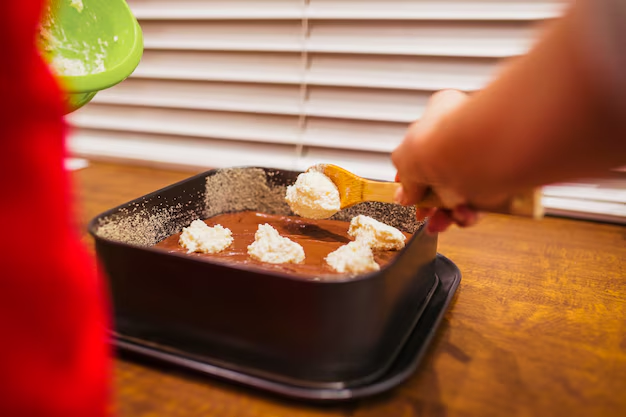Is It Safe to Put Warm Food in the Refrigerator? Everything You Need to Know
Picture this: a cozy family dinner has just come to an end, and you're left with a delightful array of leftover dishes. You eye the refrigerator and ponder, "Is it really okay to put warm food in there?" This common kitchen dilemma often sparks debate and uncertainty. With food safety and efficiency on your mind, let's delve into what professionals generally understand about storing warm food, and navigate through practical solutions and related concepts about fridge management.
🥶 Understanding the Basics: Refrigerator Dynamics
How Refrigerators Work
Refrigerators are designed to maintain a consistent temperature to ensure food stays fresh and safe for consumption. At the heart of the refrigerated environment is the delicate balance of temperature control and airflow circulation, vital for slowing down the growth of bacteria.
- Temperature Control: Typically, refrigerators operate at a temperature between 37°F and 40°F (3°C to 4°C) to effectively keep harmful bacteria at bay.
- Airflow: Ensuring adequate ventilation is crucial. Blocking these vents with hot food may disrupt the flow and affect the cooling system.
The Cooling Mechanism
One might wonder how a refrigerator manages to keep everything cooled uniformly. Here’s a quick look:
- Evaporative Cooling: A refrigerant moves through the evaporator coils, absorbing heat and allowing cooling.
- Insulation: Proper insulation keeps the warm air out and the cold air in, sustaining the required temperature.
Understanding these concepts sets the stage for determining whether placing hot food into a refrigerator affects its performance.
🌡️ The Safety Perspective: Can You Refrigerate Warm Food?
Food Safety Concerns
It's often suggested that hot food should be allowed to cool to room temperature before refrigeration, but why is this? A major factor involves the "danger zone" for foods:
- Bacteria Growth: Between 40°F and 140°F (4°C to 60°C), bacteria can multiply rapidly. Therefore, cooling foods outside this range as swiftly as possible is critical.
- Foodborne Illnesses: Left too long in that danger zone, cooked foods may become risky to eat, increasing the chance of foodborne illnesses.
Putting Warm Food Directly in the Fridge
Contrary to what some might think, it is generally safer to refrigerate warm food to avoid prolonged exposure to the danger zone:
- Cooling Quickly: Dividing food into smaller portions can aid faster cooling.
- Containers: Opt for flat, shallow containers to maximize surface area exposure and thus speed up the cooling process.
Caution is necessary, however, in balancing the load so that your refrigerator's cooling system is not overwhelmed.
🕵️ Understanding the Practical Impacts
Impact on Refrigerator Performance
Introducing warm food into the fridge can impact its efficiency and overall performance:
- Temperature Fluctuations: Large quantities of hot food can raise the fridge’s interior temperature momentarily, forcing the compressor to work harder.
- Condensation: Warm foods may cause condensation, leading to excess moisture that may affect texture and longevity of other foods.
Practical Strategies for Efficient Refrigerator Use
To ensure both food safety and efficient refrigerator use:
- Spacing: Avoid crowding the fridge. Adequate space allows for circulation, avoiding hot spots and ensuring even cooling.
- Load Distribution: Spread items out initially, then consolidate once items are appropriately chilled.
Implement these practices and you may see improved refrigerator performance without compromising on safety.
🌿 Tied Concepts and Subtopics
Food Storage Tips
When storing foods efficiently, understanding the nuances of each item's storage needs is valuable:
- Label & Date: Always mark containers with dates to keep tabs on freshness.
- Maximize Shelf Life: Separate perishables based on their sensitivity to ethylene gas.
Efficient Temperature & Settings Management
Ensuring your refrigerator settings complement your usage patterns is another practical step:
- Thermostat Adjustment: Adjust based on anticipated refrigerator load.
- Routine Maintenance: Regularly inspect and clean gaskets, coils, and vents.
Long-term Food Safety
Extend this knowledge to overarching strategies:
- Regular Checks: Inspect food for spoilage routinely.
- Empower Yourself: Stay informed on refrigerator best practices and recalibrate habits as needed.
Understanding these interconnected topics enhances not just your immediate food safety but your broader culinary endeavors as well.
📝 Quick Takeaways: Refrigerator Wisdom
Let's encapsulate the essential insights you've learned:
- 🏷️ Prioritize Quick Cooling: Transfer warm food to shallow containers for faster cooling.
- ❄️ Maintain Fridge Balance: Ensure your refrigerator isn't overloaded to keep temperatures stable.
- 🚦 Use Labels: Date your food to track freshness and mitigate spoilage.
- 🛠️ Regular Maintenance: Keep your refrigerator in peak condition with routine checks.
With these tips, you can maximize both food safety and appliance longevity.
Faced with the crossroads of whether to place warm food directly into your refrigerator, you now have a balanced, well-rounded understanding to tackle the situation effectively. With safety-oriented strategies and a bit of refrigeratory wisdom, you can manage your kitchen and save that scrumptious bite for days to come with confidence.
